Zheng Nie
An Egocentric Vision-Language Model based Portable Real-time Smart Assistant
Mar 06, 2025Abstract:We present Vinci, a vision-language system designed to provide real-time, comprehensive AI assistance on portable devices. At its core, Vinci leverages EgoVideo-VL, a novel model that integrates an egocentric vision foundation model with a large language model (LLM), enabling advanced functionalities such as scene understanding, temporal grounding, video summarization, and future planning. To enhance its utility, Vinci incorporates a memory module for processing long video streams in real time while retaining contextual history, a generation module for producing visual action demonstrations, and a retrieval module that bridges egocentric and third-person perspectives to provide relevant how-to videos for skill acquisition. Unlike existing systems that often depend on specialized hardware, Vinci is hardware-agnostic, supporting deployment across a wide range of devices, including smartphones and wearable cameras. In our experiments, we first demonstrate the superior performance of EgoVideo-VL on multiple public benchmarks, showcasing its vision-language reasoning and contextual understanding capabilities. We then conduct a series of user studies to evaluate the real-world effectiveness of Vinci, highlighting its adaptability and usability in diverse scenarios. We hope Vinci can establish a new framework for portable, real-time egocentric AI systems, empowering users with contextual and actionable insights. Including the frontend, backend, and models, all codes of Vinci are available at https://github.com/OpenGVLab/vinci.
Vinci: A Real-time Embodied Smart Assistant based on Egocentric Vision-Language Model
Dec 30, 2024



Abstract:We introduce Vinci, a real-time embodied smart assistant built upon an egocentric vision-language model. Designed for deployment on portable devices such as smartphones and wearable cameras, Vinci operates in an "always on" mode, continuously observing the environment to deliver seamless interaction and assistance. Users can wake up the system and engage in natural conversations to ask questions or seek assistance, with responses delivered through audio for hands-free convenience. With its ability to process long video streams in real-time, Vinci can answer user queries about current observations and historical context while also providing task planning based on past interactions. To further enhance usability, Vinci integrates a video generation module that creates step-by-step visual demonstrations for tasks that require detailed guidance. We hope that Vinci can establish a robust framework for portable, real-time egocentric AI systems, empowering users with contextual and actionable insights. We release the complete implementation for the development of the device in conjunction with a demo web platform to test uploaded videos at https://github.com/OpenGVLab/vinci.
InternLM-XComposer2.5-OmniLive: A Comprehensive Multimodal System for Long-term Streaming Video and Audio Interactions
Dec 12, 2024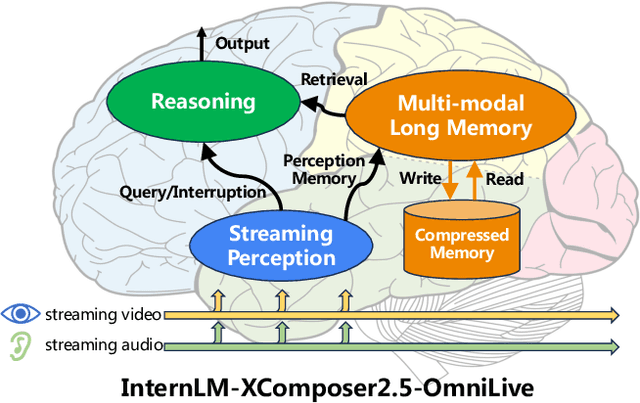
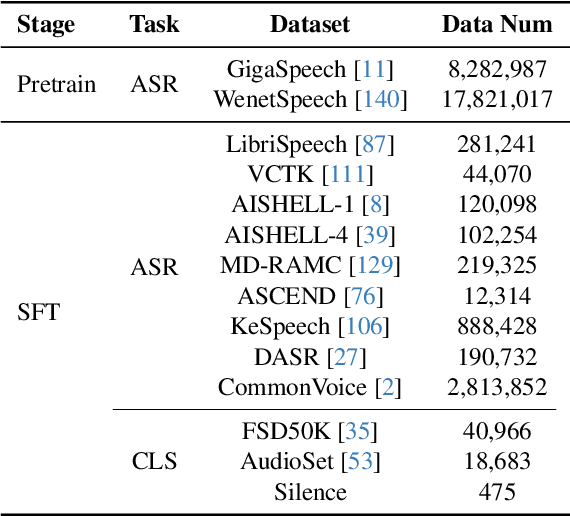
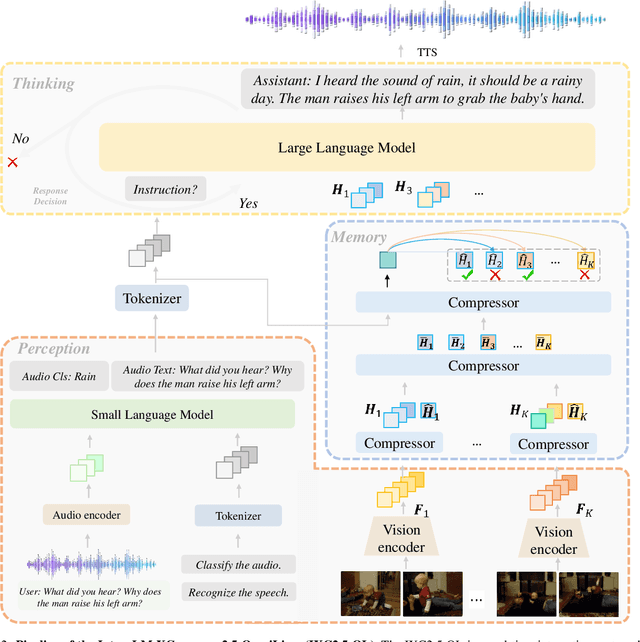
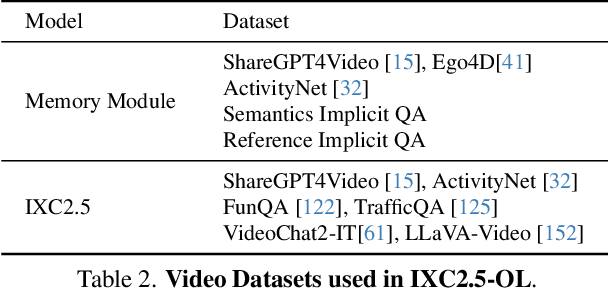
Abstract:Creating AI systems that can interact with environments over long periods, similar to human cognition, has been a longstanding research goal. Recent advancements in multimodal large language models (MLLMs) have made significant strides in open-world understanding. However, the challenge of continuous and simultaneous streaming perception, memory, and reasoning remains largely unexplored. Current MLLMs are constrained by their sequence-to-sequence architecture, which limits their ability to process inputs and generate responses simultaneously, akin to being unable to think while perceiving. Furthermore, relying on long contexts to store historical data is impractical for long-term interactions, as retaining all information becomes costly and inefficient. Therefore, rather than relying on a single foundation model to perform all functions, this project draws inspiration from the concept of the Specialized Generalist AI and introduces disentangled streaming perception, reasoning, and memory mechanisms, enabling real-time interaction with streaming video and audio input. The proposed framework InternLM-XComposer2.5-OmniLive (IXC2.5-OL) consists of three key modules: (1) Streaming Perception Module: Processes multimodal information in real-time, storing key details in memory and triggering reasoning in response to user queries. (2) Multi-modal Long Memory Module: Integrates short-term and long-term memory, compressing short-term memories into long-term ones for efficient retrieval and improved accuracy. (3) Reasoning Module: Responds to queries and executes reasoning tasks, coordinating with the perception and memory modules. This project simulates human-like cognition, enabling multimodal large language models to provide continuous and adaptive service over time.
Analysis on DeepLabV3+ Performance for Automatic Steel Defects Detection
Apr 15, 2020
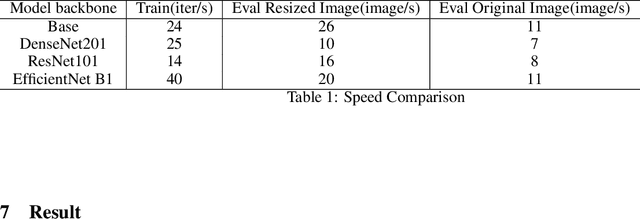

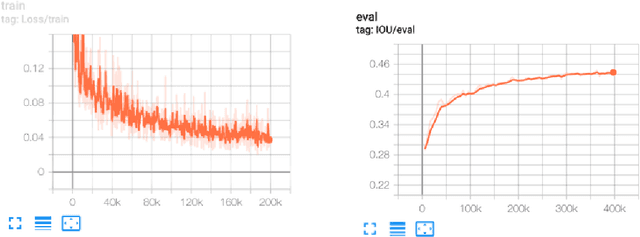
Abstract:Our works experimented DeepLabV3+ with different backbones on a large volume of steel images aiming to automatically detect different types of steel defects. Our methods applied random weighted augmentation to balance different defects types in the training set. And then applied DeeplabV3+ model three different backbones, ResNet, DenseNet and EfficientNet, on segmenting defection regions on the steel images. Based on experiments, we found that applying ResNet101 or EfficientNet as backbones could reach the best IoU scores on the test set, which is around 0.57, comparing with 0.325 for using DenseNet. Also, DeepLabV3+ model with ResNet101 as backbone has the fewest training time.
 Add to Chrome
Add to Chrome Add to Firefox
Add to Firefox Add to Edge
Add to Edge